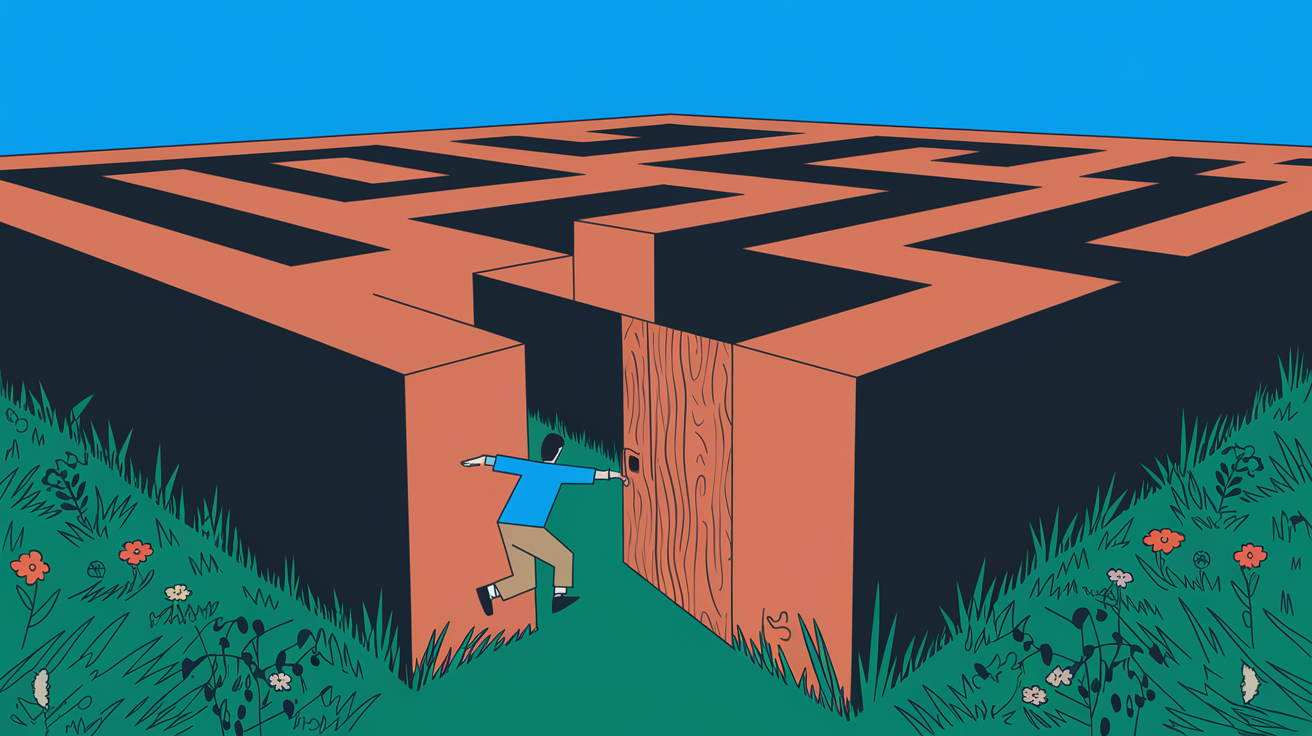Want to truly understand your customers and keep them coming back? Mapping out their experience with your brand is one of the smartest moves you can make. A well-crafted customer journey map reveals exactly how people interact with your business, from their first impression to post-purchase feedback. It uncovers what delights them, what frustrates them, and most importantly, where you can improve.
Studies show that 89% of companies with strong multi-channel strategies retain their customers. Only 33% without one do. Understanding the customer journey isn’t just good practice — it’s a competitive edge.
When done right, journey mapping improves collaboration across departments and sharpens your customer experience (CX) strategy. Most organizations develop several buyer personas, each with a unique map detailing key touchpoints, thoughts, and pain points. These maps are more than just visuals—they’re tools that drive higher satisfaction, loyalty, and, ultimately, revenue.
In fact, 71% of businesses say journey mapping has helped secure executive buy-in for greater CX investment. It’s not just about fixing problems — it’s about spotting opportunities to create seamless, memorable experiences that keep your customers engaged.
Understanding Customer Journey Mapping
At its core, customer journey mapping is the process of visualizing every interaction a customer has with your brand. It’s about making the invisible visible — surfacing the emotions, behaviors, and friction points that shape each step of the customer experience.
With tools that track activity across websites, mobile apps, and physical locations, brands can gain a deeper, data-driven understanding of customer behavior. This insight allows businesses to align their goals with real user needs. For instance, if many shoppers abandon their carts due to surprise shipping costs, that insight can lead directly to conversion-boosting changes.
Customer journeys aren’t always linear — they’re often cyclical and dynamic. That’s why a mix of behavioral analytics and direct feedback gives the most accurate picture. In 2024, a staggering 70% of online shoppers abandoned their carts, proving the urgency of understanding journey pain points.
Templates and digital mapping tools make it easier to turn customer data into actionable insights. Businesses that invest in journey mapping often see dramatic results: 70% report improved satisfaction, and 90% experience increased loyalty. Why? Because they’re no longer guessing what customers want — they’re building experiences around what customers do.
By studying recurring patterns in customer touchpoints, brands can streamline the buying process, reduce churn, and eliminate friction. Even small fixes, like clearer pricing or faster checkout flows, can lead to big wins.
Benefits of Mapping the Customer Journey
Mapping the customer journey brings many benefits. It helps improve customer experience and satisfaction. By identifying key areas, companies can fix problems and make interactions better. This leads to more loyal customers and higher sales.
Good customer journey mapping makes operations and interactions better. For example, companies that focus on customer experience are more likely to get recommendations. They can better meet user needs, leading to a 30% increase in customer satisfaction.
Also, keeping customer journey maps up to date is crucial. It helps companies stay current with market trends and customer needs. This matters because teams fail to use 70% of maps, missing valuable opportunities for improvement.
Customer journey mapping is key in meeting customer expectations. Today, 84% of consumers value the experience as much as the product. Offering personalized experiences can increase sales by 80%. So, using journey mapping to understand and serve customers better can lead to business growth.
Key Components of a Customer Journey Map
An effective customer journey map breaks down the entire customer experience into clear, actionable components. Each team plays a crucial role in identifying customer needs, understanding their emotions, and spotting areas for improvement. Here are the essential elements every journey map should include:
- Journey Stages: These represent the major phases a customer goes through, such as:
- Awareness
- Consideration
- Decision
- Purchase
- Post-purchase (e.g., support or retention)
For example, an online shopping journey might follow a path like Discover → Try → Buy → Use → Seek Support.
- Customer Touchpoints: These are the specific interactions a customer has with your brand, like visiting your website, chatting with support, or receiving emails. Mapping these ensures consistency, which 90% of consumers expect across all channels.
- Emotional Responses: Understanding how customers feel at each stage helps identify areas of satisfaction or frustration. Companies that map emotional highs and lows can make targeted improvements, leading to up to a 20% increase in customer satisfaction.
- Customer Actions and Mindsets: This includes what customers are doing and thinking during each stage. Knowing their motivations and potential obstacles gives deeper insight into their decision-making process.
- Opportunities for Improvement: Highlight areas where you can enhance the experience. These insights help teams take meaningful action to increase engagement and reduce friction.
- Cross-functional collaboration: Journey maps serve as a shared reference for marketing, sales, support, and product teams, leading to improved alignment. In fact, 61% of companies report better team collaboration through journey mapping.
By organizing the journey into components, businesses can pinpoint what’s working and what’s not. They can then optimize to create a more seamless and satisfying customer experience.
Gathering Data for Your Map
Starting a customer journey map needs accurate and insightful data. We get this by doing in-depth customer interviews. This way, we learn about their feelings and what drives them.
For example, talking to someone like Joan, a 43-year-old hospital director, gives us a lot of information. We learn about her goals and what she struggles with, like needing to make quick decisions.
Surveys and feedback tools also help us get data. They give us numbers and stories about what customers think and do. For instance, looking at web page views can show us where customers get frustrated.
Using different ways to collect data, like diary studies, gives us a full picture of the customer journey. Diary studies let us see how customers feel and think over time. This helps us understand each interaction better.
It’s good to have a team with different viewpoints, like frontline staff and management. This way, we make sure we cover all parts of the customer experience. Also, looking at what competitors do can show us what we’re doing well and what we can improve.
Teams now use AI to map customer journeys. It helps us analyze data quickly, giving us insights to make the customer experience better. Using AI tools means we can collect feedback at many points, helping us understand the decision-making process better.
To really get to know our customers, we should look at social sentiment and feedback. This shows us how customers feel at different times and what we might be missing. We should update our maps every six months or when big changes happen in the market.
Creating Your Customer Journey Map
When you start creating a customer journey, choosing the right tools is key. Tools like Miro, Lucidchart, and Canva make the journey look good and engaging. Start by collecting data from real customers through interviews and surveys.
A good map has 5–7 touchpoints in a customer’s journey. These touchpoints cover stages like awareness and decision-making. Finding and improving key moments in the customer experience boosts satisfaction and engagement.
Working together across departments is crucial. Include sales, marketing, and customer service teams in the process. This ensures the map shows all sides of the customer’s experience.
Customer journey mapping can also increase your ROI by 13% to 22%. By understanding what customers go through, you can make better products and services. In fact, 94% of businesses have created new products based on these maps, and 91% saw an increase in sales.
Only 47% of companies map customer journeys, but those that do see big benefits. They can keep more customers and make more money. During the pandemic, 1 in 3 businesses used these maps to adapt to changes.
Using data platforms can also help find and fix problems in the journey. Businesses that invest in analytics get insights to improve every interaction. Making good customer journey maps is key to keeping customers happy and loyal.

Analyzing Customer Behavior
Understanding the customer journey is key to knowing what customers want. By looking at the map, businesses can see how customers interact, feel, and give feedback. For example, Eric’s car-buying journey showed his website visits during the Compare phase. This highlighted his high interaction and possible anxiety.
When we look at a user journey map, we find both problems and happy moments. Eric faced issues in the Compare and Test phases, showing his disappointment. The map also showed the cost of leaving the mobile app, which lacked important features.
Knowing what customers do and why is very important. Segment used this knowledge to send personalized messages. Glossier found that people using two browsers at once spend more, helping them engage better with customers.
Tools like those used by Nike help analyze past and present data. This helps spot trends and improve the customer journey. It addresses both the good and bad moments in the journey.
Implementing Changes Based on Your Map
After you finish your customer journey map, it’s time to turn insights into action. This step is crucial. It shows how well you use the map’s insights to make changes. These changes should tackle problems at every stage of the customer journey. They also need to be ready to change as customer needs evolve.
First, find the key moments where customers face the most trouble. For example, if many people leave the pricing page, you can make it easier to buy. B2B companies should look at things like how well they find new customers and keep them. B2C companies need to think about how people shop online versus in stores.
Tailoring your approach is key. Your map should match different customer types, meeting their unique needs. Since 60% of customers want personalized experiences, it’s vital to make your map personal.
It’s also important to check if your changes work. Update your map every six months to see what’s working and what’s not. Studies show that focusing on customer experience can boost sales by 4-8%. Journey mapping can also make customers happier and more loyal, with a 20% increase in satisfaction and a 15% increase in retention.
Keep making your map better with feedback and new data. Since 73% of consumers value good experiences, keeping your map up-to-date is crucial. This ensures that you keep meeting customer expectations.
Working together with teams like UX and customer support makes changes better. When everyone works together, you can fix customer problems more effectively. For example, De Beers saw a 30% increase in sales after redesigning its site based on data.
Using what you learn from your customer journey map can really help your business. It shows you care about making customers happy at every step. This leads to loyalty and a better reputation for your brand.
Case Studies of Effective Journey Mapping
Effective customer journey mapping can boost conversion rates by up to 40%. For example, deRamon Plastic Surgery Institute improved its website based on user behavior. This led to a big increase in conversion rates by matching digital presence with customer needs.
HPE also saw success with its multi-persona maps. This strategy improved operational performance and cut costs. It allowed the company to serve different customer segments better, boosting conversion rates.
Starbucks has greatly increased customer loyalty through journey mapping. By understanding each step of the customer’s journey, Starbucks offers more personalized experiences. This has led to higher engagement and loyalty.
IKEA is another great example. It has combined its online and offline experiences well. This has improved customer satisfaction and loyalty, making IKEA a success in modern retail.
88% of top marketing teams see customer journey mapping as key to success, Salesforce says. For B2C SaaS companies, where getting new customers is costly, mapping is crucial. Amazon uses detailed metrics in its maps to improve customer experiences and loyalty.
E-commerce businesses can also see better success and conversion rates with effective mapping. Using KPIs in maps helps them check their success and make changes quickly.
In conclusion, these examples show how journey mapping can improve customer satisfaction and loyalty. This leads to higher conversion rates and stronger customer relationships.
Tips for Continuous Improvement
Improving your customer journey map is an ongoing task. It’s about keeping your map fresh and relevant. This way, you can match customer interactions with their changing needs and the market.
Regularly updating your map is key. You might do this every month or every quarter. This keeps your business in touch with what customers want. Using real customer data makes your map more accurate and helps you make better decisions.
Working together is also important. Getting feedback from everyone involved in the customer journey helps you understand it better. This way, you can focus on improving the parts that matter most to customers.
Turning Insight Into Action: Keep Designing With Empathy
Customer journey mapping isn’t a one-time exercise. It’s an ongoing strategy that connects your customers’ needs with your brand’s response. By mapping journeys with intention and analyzing real behavior, you improve the user experience. You also build loyalty, trust, and long-term success.
If you’re passionate about crafting seamless, user-centered experiences, you’ll love what we’re exploring over on Mood Joy. From UX research tips to real-world UI design practices, our blog dives deeper into the design thinking that fuels great customer journeys.
Head over to Mood Joy and keep the momentum going with more insights on turning empathy into action through smarter design.



